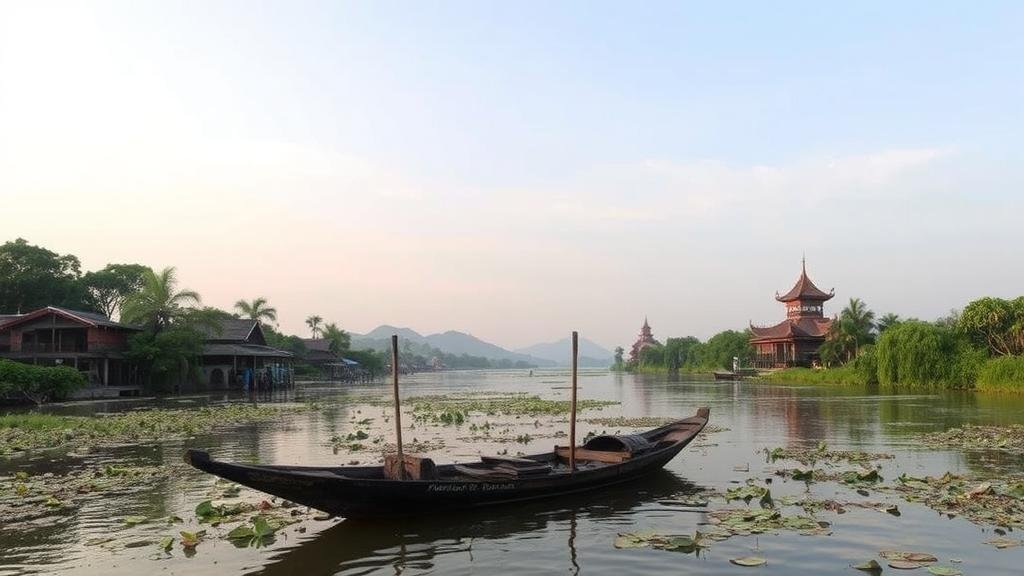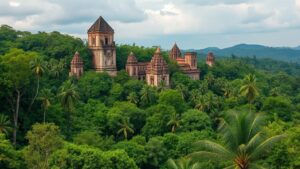Exploring the ancient waterways of the Mekong Delta for submerged Khmer Empire cities.
Exploring the Ancient Waterways of the Mekong Delta for Submerged Khmer Empire Cities
The Mekong Delta, a vast network of rivers, swamps, and islands, is known for its extraordinary biodiversity and rich cultural heritage. But, beneath its serene waters lies a treasure trove of history from the once-mighty Khmer Empire. This article delves into the submerged cities of the Khmer Empire, exploring their historical significance and the archaeological efforts to uncover their mysteries.
The Khmer Empire: A Brief Overview
The Khmer Empire, which peaked between the 9th and 15th centuries, was one of the most influential civilizations in Southeast Asia. Encompassing modern-day Cambodia, parts of Thailand, Laos, and Vietnam, the empire is renowned for its impressive architectural feats, most notably the temple complex of Angkor Wat. The empires capital, Angkor, thrived due to advanced irrigation systems and trade routes, which positioned it as a major political and economic hub.
The Role of Waterways in Khmer Civilization
Waterways were vital to the success of the Khmer Empire. The intricate system of rivers and canals allowed for efficient transportation, communication, and irrigation. This network not only facilitated trade but also provided the necessary water supply for agriculture, which was the backbone of the economy. Significant waterways included the Tonle Sap Lake and the Mekong River, which played crucial roles in the empire’s expansion and sustainability.
Submerged Khmer Cities in the Mekong Delta
Archaeological studies suggest that several Khmer cities, potentially including parts of the capital itself, lie submerged in the Mekong Delta. Historical records indicate that as the empire expanded, the delta underwent significant environmental changes, including flooding and sedimentation, leading to the submergence of these once-thriving cities.
- Phnom Penh: Once a significant center for trade, evidence suggests parts of ancient Phnom Penh may be submerged, which is particularly intriguing given its later prominence as the capital of modern Cambodia.
- Preah Khan of Kompong Svay: While not submerged, this site, located near the Mekong Delta, connects the dots to the intricate water management systems that suggest engineering marvels akin to those found in Angkor.
- Angkor Borei: An important archaeological site, Angkor Borei was a thriving port during the Khmer Empire, and ongoing excavations have revealed ancient structures that hint at a vast network of submerged civilizations in the region.
Archaeological Efforts and Technologies
Recent years have seen a surge in archaeological interest in the Mekong Delta, utilizing advanced technologies such as LiDAR (Light Detection and Ranging) and underwater sonar mapping. e technologies allow researchers to penetrate thick vegetation and murky waters to reveal hidden structures. For example, LiDAR has been instrumental in mapping the layout of ancient cities without disturbing the sediments, providing an unparalleled view of urban planning and environmental adaptations.
In 2020, a team of archaeologists uncovered evidence of a canal system that may have connected various submerged sites, suggesting a previously unknown extent of Khmer urban planning and water management systems. Such discoveries expand the understanding of how the Khmer civilization managed resources to sustain its population.
Challenges of Research in Submerged Sites
Despite technological advancements, challenges persist in researching submerged sites. Mekong Delta’s shifting ecosystems, affected by climate change and human activity, pose threats to archaeological preservation. Also, access to remote areas can be hindered by seasonal flooding or political instability, making consistent study difficult.
Real-World Applications and Cultural Significance
The ongoing exploration of submerged Khmer cities carries significant implications for cultural heritage and tourism. As these underwater wonders are unveiled, they can contribute to a broader understanding of Southeast Asian history and heritage. Also, they can stimulate the local economy through heritage tourism, inviting visitors to engage with the ancient past while supporting modern communities.
Actionable Takeaways
- Engage with local history: Consider guided tours that highlight archaeological findings in the Mekong Delta.
- Support conservation efforts: Participate in initiatives aimed at protecting submerged sites from environmental degradation.
- Stay informed: Follow recent archaeological studies and discoveries to deepen understanding of the Khmer Empires legacy.
Exploring the ancient waterways of the Mekong Delta not only reveals submerged Khmer cities but also enhances our appreciation for the cultural achievements of this remarkable civilization. The interplay of environment and ingenuity continues to captivate both researchers and visitors alike.



